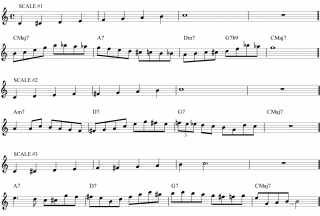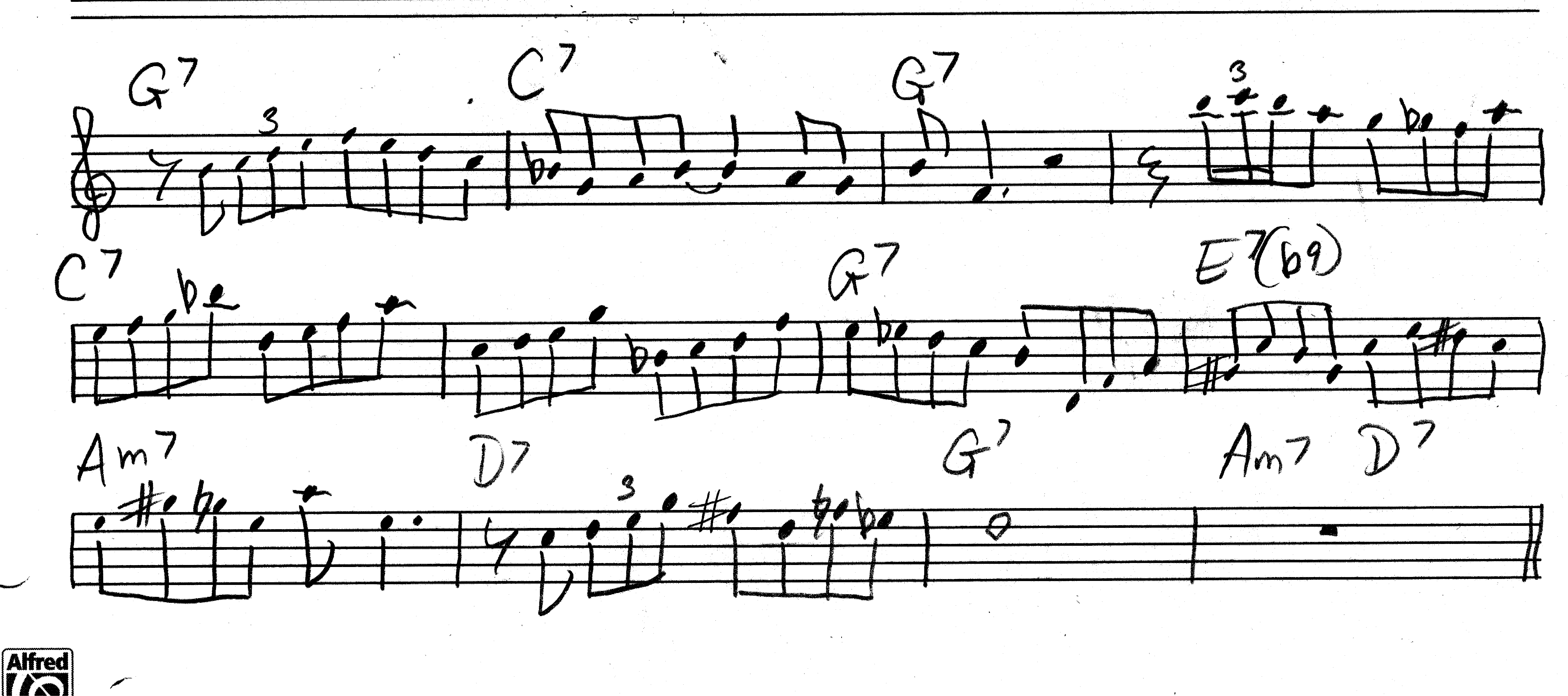Most of my music posts share technical exercises or theoretical information. This post is different. I want to share with you something very personal. It is the story of the saxophone that I play: my beloved Conn 6M Ladyface.
When I was a small boy living with my family in Niles, Michigan, my dad kept his alto sax in its original black case up against the wall by his bed. He had bought the horn back when he was a young man, and was learning to play it until service in WWII interrupted his musical aspirations and a bout of tuberculosis finished them off entirely. He met my mother in the TB sanatorium, where she worked as a nurse. Dates followed, letters, a ring, marriage, and then me.
My parents moved from Chicago to Niles when I was a year old. The sax sat quietly in its case, all but forgotten. Once in a great while, though, Dad would take that case and open it up, and it was on one such occasion that I got my first glimpse of the horn. There it lay, cradled in the case’s rich, purple velvet lining: a shining complexity of rods, springs, pearl buttons, pads, and palm keys, all neatly arranged on that deeply golden, sensuously curving body. It was beautiful, fascinating, and to me, impossibly complicated. How could anybody take something so bewilderingly engineered and make music with it?
Ever after that first glimpse of my father’s horn, I wanted to see more of it. From its aureate luster, to the resonant sound of its bell pads thumping against the tone holes, to its mysterious, brittle reeds, that saxophone captivated me. I was far too young to play it, but it was already beginning to play me.
In the summer after my sixth grade year, my family–which had grown to include my brothers Pat, Terry, and Brian, and my sister, Diane–moved to Grand Rapids. Junior high school loomed on the horizon. No longer would I be attending a private Catholic school; the Forest Hills public school system awaited me in the fall, including its band program.
Band? I was going to be in band?
Yes, that was the plan. In September, when I climbed aboard the school bus for the first day of school, that black case containing my father’s horn was in my hands. Private lessons with my band director, Richard Streng, commenced soon after. And I took to my dad’s alto sax as naturally as if I had been born for it–which, of course, was the case.
The first note I learned to play was A. The second was D. After that came G, and then, I think, C; after that, I don’t recall the order. What I do remember is stopping between each note and carefully inspecting my fingers to make sure they were positioned properly. It seems amazing that the fluidity with which I get around on my instrument today got its start with such painstaking deliberateness. But I didn’t mind. I was learning to play music, learning to play my dad’s saxophone, and I was absolutely thrilled. I could do this! No one needed to tell me to practice; I couldn’t wait to get in my daily time on the sax.
Mr. Streng seemed to enjoy my private lessons with him as much as I did. He recognized in me a genuine desire to excel. I came to my lessons prepared and ready to play, so he consistently had something he could work with. I still remember his baritone voice after every lesson: “Bob, as always, it has been a pleasure.”
From Mr. Streng, I learned a life lesson every bit as important as those first music lessons, and that was the power of praise. Never underestimate what a good word can accomplish in a person’s heart. A child’s heart, a young adult’s heart, a heart of many years’ experience … it doesn’t matter. Praise empowers; praise instills vision; praise nurtures an inner voice that says, “Yes, I can!”
(To be continued)






